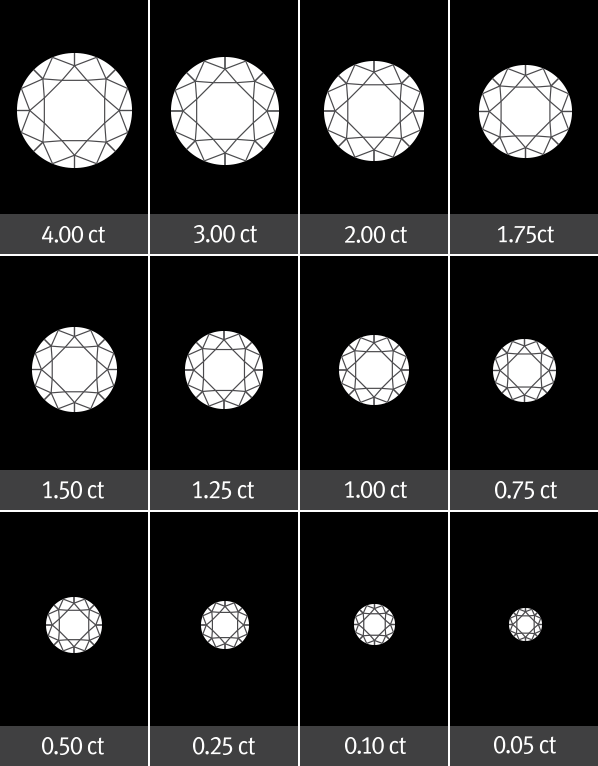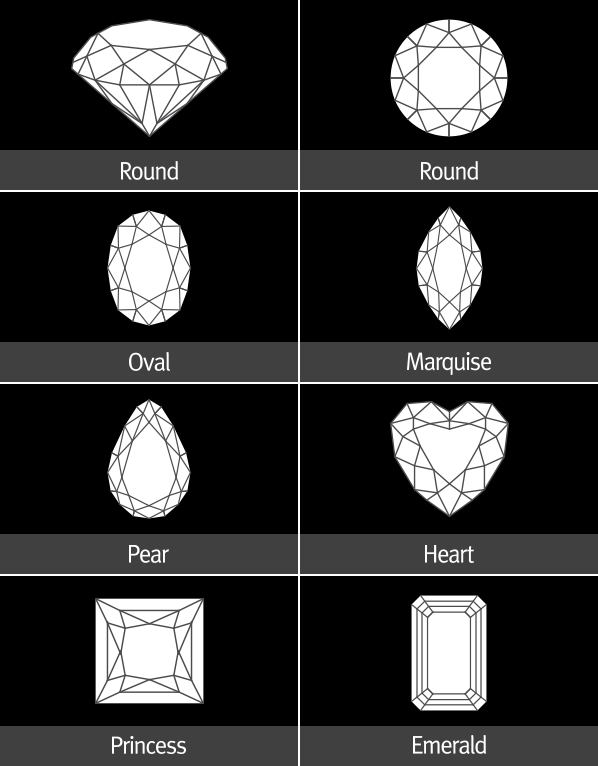
Carat
Carat weight is the measurement of how much a diamond
weighs. A metric “carat” is defined as 200 milligrams. All
else being equal, diamond price increases with diamond
carat weight, as larger diamonds are more rare and more
desirable. However, two diamonds of equal carat weight can
have very different values depending on the other “C’s”.

Cut
Cut describes the shape, proportions and dimensions of
a diamond. We often think of a diamond’s cut as a shape
(round, emerald, pear), but a diamond’s cut grade is
really about how well the diamond’s facets interact with
light. Diamonds with excellent proportions will reflect the
most light, whereas Diamonds that may be a little deep
or shallow will negatively affect the reflection of light. Due
to the transmission of light, Diamonds must be cut with
precision, as cut not only affects the shape and
proportions, but also has a large bearing on the other
“C’s”.

Color
Color is actually defined by the absence of color. The
clearer a Diamond is, the better the color. Typically, color is
measured by D-M, but the range goes all the way down to
Z. Then there are Fancy-color Diamonds, which are formed
by distinct mutations and radiation in the Diamond, usually
through an absence or abundance of minerals. Fancy color
Diamonds come in colors such as pink, blue, yellow,orange
and more, are measured by hue (base color), tone(light,
vivid, intense) and saturation and are usually more valuable
than white diamonds.

Clarity
Clarity refers to the “purity” if a stone. Natural diamonds
are the result of carbon exposed to tremendous heat and
pressure deep in the earth. This process can result in a
variety of internal characteristics called “inclusions” and
external characteristics called “blemishes.” Clarity is
graded based on this, and stones with less flaws are
more rare and in turn, more valuable.
